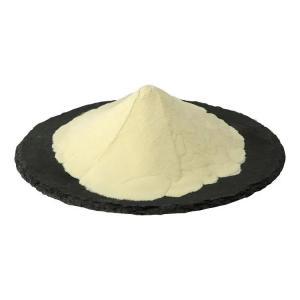Wholesale Food Grade Phospholipids,Emulsified and Dispersed
Time:2024-12-30Phospholipids exhibit excellent emulsifying and dispersing effects in food, which significantly impact food quality. Below is a detailed analysis of the emulsifying and dispersing effects of phospholipids in food and their influence on food quality:
I. Emulsifying and Dispersing Effects of Phospholipids
1. Emulsifying Action:
Phospholipids possess good emulsifying properties, enabling them to combine water and oil, dispersing them into tiny particles. This allows the fat and water molecules in food to be evenly distributed, preventing oil-water separation.
The emulsifying action of phospholipids is primarily attributed to their unique molecular structure, which includes a hydrophobic fatty acid tail and a hydrophilic head, such as a phosphate group or choline. This structure allows phospholipids to act as surfactants between water and oil, promoting the uniform dispersion and interaction of both phases.
2. Dispersing Effect:
Through the emulsifying action of phospholipids, fat and water molecules are dispersed into fine particles that are evenly distributed throughout the food, enhancing its uniformity and smoothness.
The dispersing effect of phospholipids also prevents the aggregation and sedimentation of fats in food, thereby extending the shelf life of the product.
II. Impact of Phospholipids on Food Quality
1. Improving Texture and Mouthfeel:
The emulsifying and dispersing effects of phospholipids contribute to a more uniform and delicate texture, resulting in a richer and more pleasant mouthfeel. For example, in dairy products, pastries, and desserts, phospholipids can increase product softness, smoothness, and mouthfeel complexity.
In baked goods, phospholipids serve as dough conditioners, enhancing gluten elasticity and toughness, resulting in larger bread volumes and softer textures. Additionally, they promote the even distribution of fats and water, improving the color and gloss of baked products.
2. Enhancing Stability:
The emulsifying effect of phospholipids helps stabilize the emulsified systems in food, preventing issues such as fat separation, clumping, and sedimentation. This contributes to longer shelf life and the retention of food quality and taste.
In dairy products, phospholipids act as emulsifiers and stabilizers, improving emulsification stability, preventing fat from rising or separating.
3. Nutritional Supplementation:
Phospholipids are an essential component of cell membranes and serve as a nutritional supplement. Adding phospholipids to food provides necessary phospholipid components, which help maintain the health and integrity of cell membranes.
In functional foods, phospholipids are used as nutritional fortifiers and are added to infant formulas and health supplements for the elderly to meet the specific nutritional needs of these groups.
4. Antioxidant Properties:
Some phospholipids also exhibit antioxidant properties, which help slow down the oxidation process of fats, reducing the rate of food spoilage. This is particularly important for foods prone to oxidation, such as oils, nuts, and candies.
The emulsifying and dispersing effects of phospholipids significantly influence food quality. By improving texture and mouthfeel, enhancing stability, providing nutritional supplementation, and exhibiting antioxidant properties, phospholipids play an increasingly important role in the food industry.


 CN
CN





